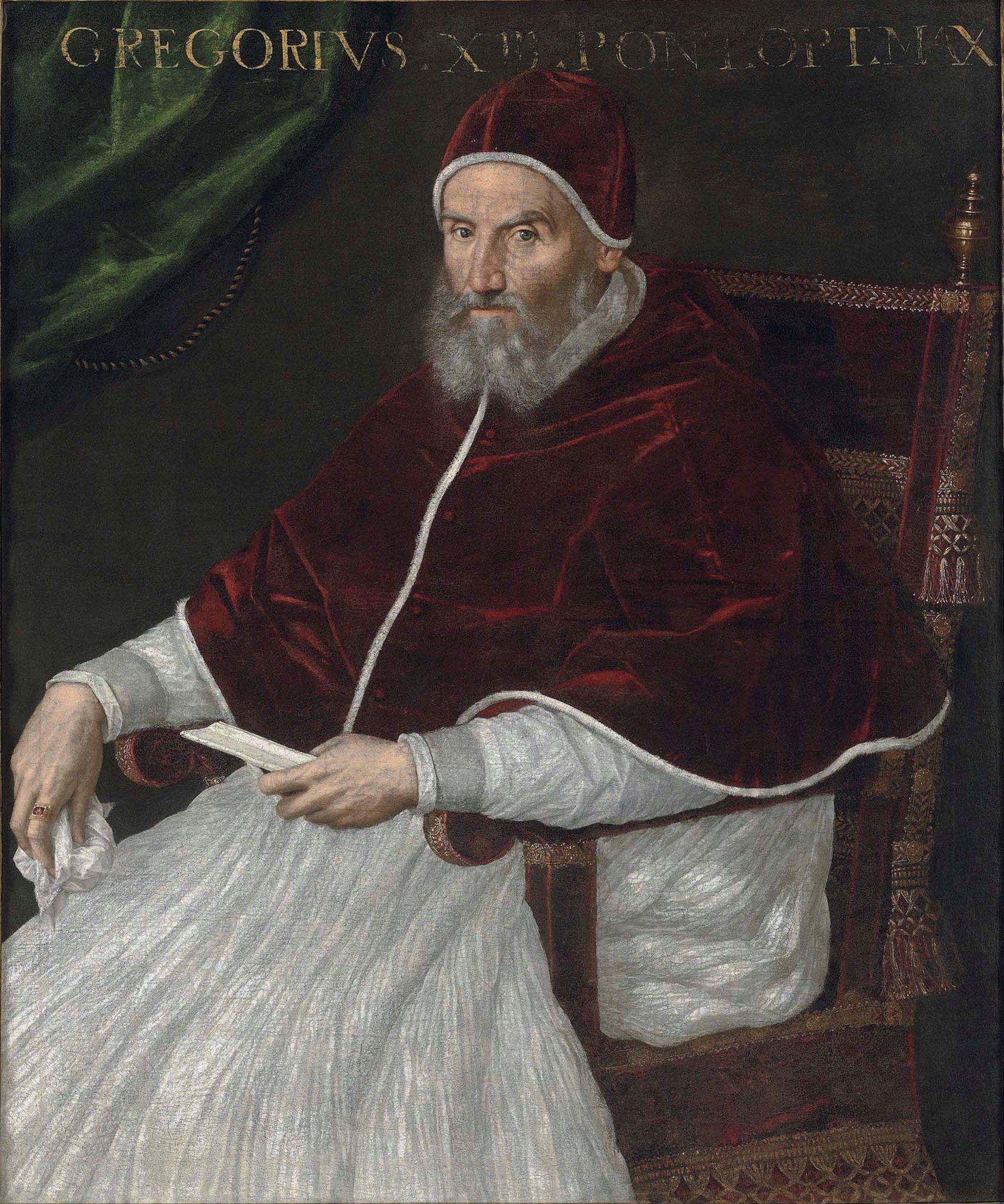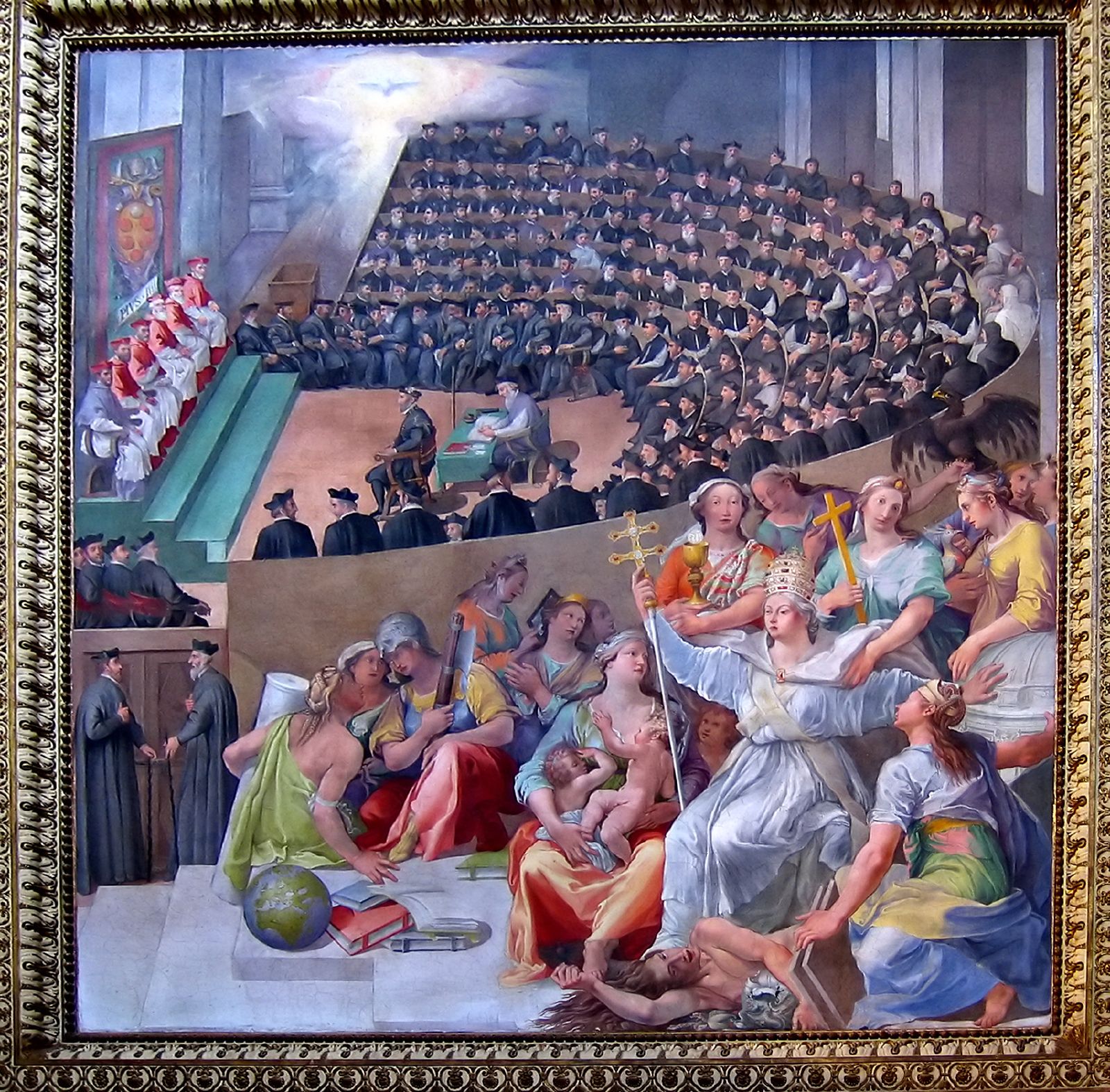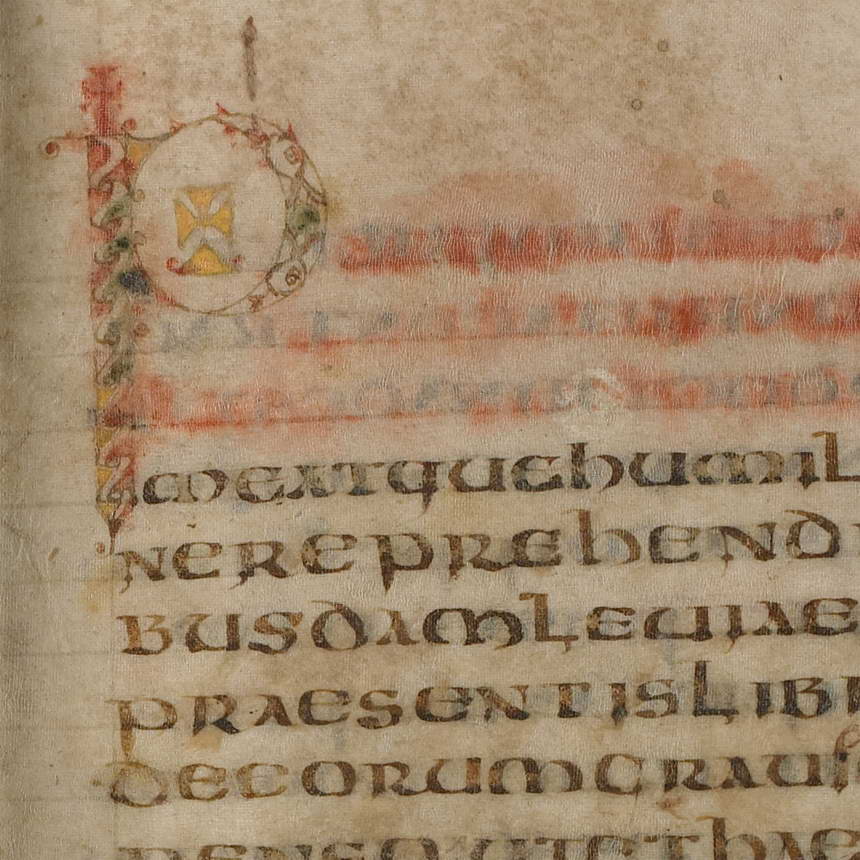 |
Commendatory Abbot
A commendatory abbot () is an ecclesiastic, or sometimes a layman, who holds an abbey ''in commendam'', drawing its revenues but not exercising any authority over its inner monastic discipline. If a commendatory abbot is an ecclesiastic, however, he may have limited jurisdiction. Originally only vacant abbeys, or those that were temporarily without an actual superior, were given ''in commendam'', in the latter case only until an actual superior was elected or appointed. An abbey is held ''in commendam'', i.e. provisorily, in distinction to one held ''in titulum'', which is a permanent benefice.Ott, Michael. "In Commendam." The Catholic Encyclopedia Vol. 7. New York: Robert Appleton Company, 1910. 26 Jul. 2015 History Originally only vacant abbeys, or such as were temporarily witho ...[...More Info...] [...Related Items...] OR: [Wikipedia] [Google] [Baidu] |
|
Ecclesiastic
{{Short pages monitor ... [...More Info...] [...Related Items...] OR: [Wikipedia] [Google] [Baidu] |
|
|
Papal Schism Of 1378
The Western Schism, also known as the Papal Schism, the Great Occidental Schism, the Schism of 1378, or the Great Schism (), was a split within the Catholic Church lasting from 20 September 1378 to 11 November 1417, in which bishops residing in Rome and Avignon simultaneously claimed to be the true pope, and were eventually joined by a line of Pisan claimants in 1409. The event was driven by international rivalries, personalities and political allegiances, with the Avignon Papacy in particular being closely tied to the French monarchy. The papacy had resided in Avignon since 1309, but Pope Gregory XI returned to Rome in 1377. The Catholic Church split in September 1378, when, following Gregory XI's death and Urban VI's subsequent election, a group of French cardinals declared his election invalid and elected Clement VII, who claimed to be the true pope. As Roman claimant, Urban VI was succeeded by Boniface IX, Innocent VII and Gregory XII. Clement VII was succeeded as Avi ... [...More Info...] [...Related Items...] OR: [Wikipedia] [Google] [Baidu] |
|
|
Subiaco, Italy
Subiaco is a ''comune'' (municipality) in the Metropolitan City of Rome Capital, in the Italian region of Latium, from Tivoli alongside the River Aniene. It is a tourist and religious resort because of its sacred grotto ( Sacro Speco), in the medieval , and its Abbey of Santa Scolastica. It is one of I Borghi più belli d'Italia ("The most beautiful villages of Italy"). The first books to be printed in Italy were produced here in the late 15th century. History Among the first ancient settlers in the area were the Aequi, an Italic people. In 304 BC they were conquered by the Romans, who introduced their civilization and took advantage of the waters of the River Aniene. The present name of the city comes from the artificial lakes of the luxurious villa that Roman Emperor Nero had built: in Latin ''Sublaqueum'' means "under the lake". The name was applied to the town that developed nearby. The biggest of the three Subiaco Dams was then the highest dam in the world until its de ... [...More Info...] [...Related Items...] OR: [Wikipedia] [Google] [Baidu] |
|
 |
Pope Pius X
Pope Pius X (; born Giuseppe Melchiorre Sarto; 2 June 1835 – 20 August 1914) was head of the Catholic Church from 4 August 1903 to his death in August 1914. Pius X is known for vigorously opposing Modernism in the Catholic Church, modernist interpretations of Ten Commandments in Catholic theology, Catholic doctrine, and for promoting liturgical reforms and Thomism, Thomist scholastic theology. He initiated the preparation of the 1917 Code of Canon Law, the first comprehensive and systemic work of its kind, which would ultimately be promulgated by Pope Benedict XV, his successor. He is venerated as a saint in the Catholic Church. Pius X was devoted to the Blessed Virgin Mary under the Marian title, title of Our Lady of Confidence; while his papal encyclical ''Ad diem illum'' took on a sense of renewal that was reflected in the motto of his pontificate. He advanced the Liturgical Movement by formulating the principle of ''participatio actuosa'' (active participation of the ... [...More Info...] [...Related Items...] OR: [Wikipedia] [Google] [Baidu] |
|
Cluny Abbey
Cluny Abbey (; , formerly also ''Cluni'' or ''Clugny''; ) is a former Benedictine monastery in Cluny, Saône-et-Loire, France. It was dedicated to Saints Peter and Paul. The abbey was constructed in the Romanesque architectural style, with three churches built in succession from the 4th to the early 12th centuries. The earliest basilica was the world's largest church until the St. Peter's Basilica construction began in Rome. Cluny was founded by Duke William I of Aquitaine in 910. He nominated Berno as the first abbot of Cluny, subject only to Pope Sergius III. The abbey was notable for its stricter adherence to the Rule of St. Benedict, whereby Cluny became acknowledged as the leader of western monasticism. In 1790 during the French Revolution, the abbey was sacked and mostly destroyed, with only a small part surviving. Starting around 1334, the Abbots of Cluny maintained a townhouse in Paris known as the Hôtel de Cluny, which has been a public museum since 1843. A ... [...More Info...] [...Related Items...] OR: [Wikipedia] [Google] [Baidu] |
|
 |
Innocent X
Pope Innocent X (6 May 1574 – 7 January 1655), born Giovanni Battista Pamphilj (or Pamphili), was head of the Catholic Church and ruler of the Papal States from 15 September 1644 to his death, in January 1655. Born in Rome of a family from Gubbio in Umbria who had come to Rome during the pontificate of Pope Innocent IX, Pamphili was trained as a lawyer and graduated from the Collegio Romano. He followed a conventional ''cursus honorum'', following his uncle Girolamo Pamphili as auditor of the Rota, and like him, attaining the position of cardinal-priest of Sant'Eusebio. Before becoming pope, Pamphili served as a papal diplomat to Naples, France, and Spain. Pamphili succeeded Pope Urban VIII (1623–44) on 15 September 1644 as Pope Innocent X, after a contentious papal conclave that featured a rivalry between French and Spanish factions. Innocent X was one of the most politically shrewd pontiffs of the era, greatly increasing the temporal power of the Holy See. Major ... [...More Info...] [...Related Items...] OR: [Wikipedia] [Google] [Baidu] |
 |
Gregory XIII
Pope Gregory XIII (, , born Ugo Boncompagni; 7 January 1502 – 10 April 1585) was head of the Catholic Church and ruler of the Papal States from 13 May 1572 to his death in April 1585. He is best known for commissioning and being the namesake for the Gregorian calendar, which remains the internationally accepted civil calendar to this day. Early biography Youth Ugo Boncompagni was born the son of Cristoforo Boncompagni (10 July 1470 – 1546) and Angela Marescalchi, and paternal grandson of Giacomo Boncompagni and Camilla Piattesi, in Bologna, where he studied law and graduated in 1530. He later taught jurisprudence for some years, and his students included notable figures such as Cardinals Alessandro Farnese (cardinal), Alexander Farnese, Reginald Pole and Charles Borromeo. He had an illegitimate son after an affair with Maddalena Fulchini, Giacomo Boncompagni, but before he took holy orders, making him the last Pope to have left issue. Career before papacy At the age of 3 ... [...More Info...] [...Related Items...] OR: [Wikipedia] [Google] [Baidu] |
|
Motherhouse
A motherhouse or mother house is the principal house or community for a Catholic religious community.YourDictionaryMotherhouse/ref> One example is the Missionaries of Charity's motherhouse in Kolkata, which functions as the congregation's headquarters.Kolkata TourismMother House Kolkata (Timings, History, Entry Fee, Images, Built by & Information) accessed 14 February 2023 A motherhouse would normally be where the residence and offices of the religious superior In a hierarchy or tree structure of any kind, a superior is an individual or position at a higher level in the hierarchy than another (a "subordinate" or "inferior"), and thus closer to the apex. General A superior generally has the power t ... of the community would be located. If the community is divided geographically, it is referred to as the provincial motherhouse and would be where the regional superior would be in residence. References * {{struct-type-stub ... [...More Info...] [...Related Items...] OR: [Wikipedia] [Google] [Baidu] |
|
 |
Council Of Trent
The Council of Trent (), held between 1545 and 1563 in Trent (or Trento), now in northern Italy, was the 19th ecumenical council of the Catholic Church. Prompted by the Protestant Reformation at the time, it has been described as the "most impressive embodiment of the ideals of the Counter-Reformation.""Trent, Council of" in Cross, F. L. (ed.) ''The Oxford Dictionary of the Christian Church'', Oxford University Press, 2005 (). It was the last time an ecumenical council was organized outside the city of Rome. The Council issued key statements and clarifications of the Church's doctrine and teachings, including scripture, the biblical canon, sacred tradition, original sin, justification, salvation, the sacraments, the Mass, and the veneration of saintsWetterau, Bruce. ''World History''. New York: Henry Holt and Company, 1994. and also issued condemnations of what it defined to be heresies committed by proponents of Protestantism. The consequences of the council were als ... [...More Info...] [...Related Items...] OR: [Wikipedia] [Google] [Baidu] |
 |
Clement V
Pope Clement V (; – 20 April 1314), born Raymond Bertrand de Got (also occasionally spelled ''de Guoth'' and ''de Goth''), was head of the Catholic Church and ruler of the Papal States from 5 June 1305 to his death, in April 1314. He is remembered for suppressing the order of the Knights Templar and allowing the execution of many of its members. A Frenchman by birth, Clement moved the Roman Curia, Papacy from Rome to Avignon, ushering in the period known as the Avignon Papacy. Early career Raymond Bertrand was born in Villandraut, Vilandraut, Aquitaine, the son of Bérard, Lord of Villandraut. Bertrand studied the arts at Toulouse and canon and civil law at Orléans and Bologna. He became Canon (priest), canon and sacristan of the Cathedral of Saint-André in Bordeaux, then vicar-general to his brother Bérard de Got, the Archbishop of Lyon, who in 1294 was created Cardinal-Bishop of Albano and papal legate to France. He was then made Bishop of St-Bertrand-de-Comminges, the c ... [...More Info...] [...Related Items...] OR: [Wikipedia] [Google] [Baidu] |
 |
Cure Of Souls
''The Book of Pastoral Rule'' (Latin: ''Liber Regulae Pastoralis'', ''Regula Pastoralis'' or ''Cura Pastoralis'' — sometimes translated into English ''Pastoral Care'') is a treatise on the responsibilities of the clergy written by Pope Gregory I around the year 590, shortly after his Pope, papal inauguration. It became one of the most influential works on the topic ever written. The title was that used by Gregory when sending a copy to his friend Leander of Seville. The text was addressed to John, the bishop of Ravenna, as a response to a query from him. Gregory later revised the text somewhat. Description The personal, intellectual and moral standards Gregory enjoined parish priests to possess, though noble, were considered in certain quarters to be unrealistic given the limitations imposed by 6th century realities. For example, one letter from the Bishop of Cartagena (Book II, letter 54 in Gregory's collected correspondence) praises the book, but expresses a reserve that it ... [...More Info...] [...Related Items...] OR: [Wikipedia] [Google] [Baidu] |